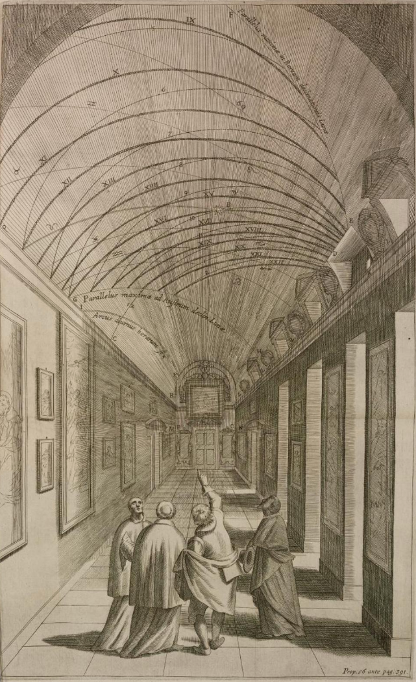Recent work by historians has yielded an ever-expanding list of sites in early modern Western Europe associated with the rise of the ‘new science’—that broad category of innovation in the natural sciences that included new theories for understanding natural phenomena (e.g., corpuscularianism, mechanical philosophy) and the development of experimental procedures and precision instruments to better observe, measure, and quantify nature. In addition to scientific academies and anatomy theaters, scholars have shown how overlooked spaces such as gardens, courts, marketplaces, and even the rooms of private households (studies, parlors, kitchens) were also crucial settings for what is now commonly referred to as the ‘Scientific Revolution’. Few historians, however, would also think to add the Catholic cloister to this list. This is only natural; today we are inclined to consign monasticism to the Middle Ages, dismissing it as a social, cultural, and religious relic of a pre-modern era. Yet cloisters—broadly meaning here convents, monasteries, or any other religious communal living space imposing strict rules of observance—were also home to dynamic intellectual cultures in early modern Europe. Their output not only included subjects that monasteries traditionally excelled in, such as history and biblical exegesis, but also, more remarkably, work that directly links these stereotypically ‘retrogressive’ settings to innovations in natural history, mechanics, and experimental philosophy in the 17th and 18th centuries.
There are a range of examples to illustrate this claim, but before proceeding it is first helpful to consider the place of clerics in an otherwise crowded intellectual landscape of lecturers, academicians, physicians, and gentleman scholars. After all, it is not news that some of the seminal contributors to the sciences came from the Catholic clergy. From the medieval cloister emerge the examples of the Franciscans Roger Bacon and William of Ockham, and the Dominicans Albertus Magnus and Thomas Aquinas. In the early modern era, one need only look to the Jesuits, whose scientific champions included Christopher Clavius, José de Acosta, Athanasius Kircher, and Gaspar Schott. It is important, however, to recognize the differences between the various categories of clergy, including between individual orders. For instance, although the Jesuits largely dominate the historiographical narrative, cloistered religieux (a general term for any member of a religious order or congregation, such as a monk, friar, or nun) were actually very distinct groups in the early modern period. Like the Jesuits, they were bound by strict vows. But in contrast, these religieux were (depending on the order) either partially or fully enclosed in fixed monastic settings, were not as involved in educating the laity, and were required to observe controlled social relations with the external lay population. Such environments, in turn, produced a particular type of intellectual culture—one that was characterized by close-knitted homosocial relations, the preservation of certain forms of medieval learning, and the commitment to an all-encompassing practice of a particular kind of spiritual life.
What was the impact of this environment on their scholarship? There are two sides to this question, one of which considers what makes science epistemically ‘Catholic’ or ‘monastic’. For example, such questions include: what are the doctrinal commitments that need to be reflected in science? What is the proper relationship between philosophy and theology? How do our faculties work to interpret creation? The other side of the question looks across different institutions to address the social, cultural, and spiritual structures shaping intellectual labor. In the case of the monastic habitus, the cloister was structured as a collaborative, single-sex social environment that was largely (at least in theory) liberated from the strict hierarchies that governed other institutions like the universities. In fact, the idea of the cloister was highly revered by lay scholars (Catholic and Protestant alike) who saw such spaces as ideal environments for proper academic work. For instance, the Royal Society fellow John Evelyn (1620-1706) drew up a plan in 1659 for an ‘ideal natural philosophical research institute’ largely modeled on monasteries: it sequestered gentlemen from their wives and placed the men together on a large estate to create structured opportunities for contemplation and daily conversation. What he and others envied of their imagined monastic peers was their freedom to detach themselves from worldly affairs, removed from the distractions of family life or from having to earn a living. It also afforded them in-built opportunities for face-to-face collaboration, mentorship, and intellectual friendship.
Evelyn’s vision, of course, did not acknowledge some of the brutal realities of monastic living, such as its poverty, its uneven distribution of resources, and the distracting tedium of monastic offices. Nevertheless, he was correct to recognize how different social environments produced their own sets of practices that, in turn, could lead to distinct intellectual outcomes. This can be linked to a concept developed by Mary Carruthers, the scholar of medieval memory, known as ‘orthopraxis,’ the shared mental habits cultivated according to apprenticeship models and transmitted within closed institutional settings. And it is this that makes early modern religieux so compelling as an object of study: their traditions of learning and living often produced forms of inquiry that differed from other knowledge-producing communities. In the case of the sciences, uncovering those forms of inquiry may tell us something new about the intellectual lineages of those novel scientific ideas emerging in early modern Europe.
To illustrate this, let us turn to a set of examples from one order in particular, the Order of Minims. This mendicant order is largely forgotten today but flourished in early modern Catholic Europe. The Minims were originally founded as a hermitage in 15th-century Calabria by an ex-Franciscan friar named Francesco da Paola. His community was largely defined by its asceticism and lived according to four vows: the three common vows of poverty, chastity, and obedience, and a fourth vow of fasting—meaning, the observation of perpetual Lent through permanent abstinence from meat, dairy, or any other foods derived from ‘carnal flesh’. By 1600, Paola’s order gained a particularly large foothold in Europe, especially in France. Its success there was partially realized by the French crown, which was sponsoring religious institutions to re-establish Catholic hegemony in the nation following the destructive Wars of Religion. In turn, early modern Minims balanced their spiritualized withdrawal from the world with a social purpose attune to the broad cultural and intellectual concerns of French society. For many of these friars, this included a deep familiarity with the scholarly debates of the day, including those related to the sciences.
The most famous of these friars was, undoubtedly, the Paris-based scholar Marin Mersenne (1588-1648). Historians have long recognized Mersenne’s position in the history of early modern science, highlighting his application to mathematics in questions of physics, his promotion of experimental philosophy, and his establishment of a wide correspondence network that efficiently circulated ideas in an era before scientific journals. Few historians, however, have also considered the significance of Mersenne’s identity as a Minim. To some extent, it is one that can be appreciated from a material point of view: Mersenne was the son of a low-born laborer in rural France, and his joining of a wealthy and influential order, whose most important house was found in the heart of the French capital, provided him with the kinds of material resources and social connections necessary for scholarly success. However, his connection to the Minims went deeper than this, emerging in the substance of his intellectual output. Remarkably, this is best illustrated in his writings on mathematics and mechanics. Not only are they replete with devotional exhortations, but they also outline the edificatory potential of the outcomes of various scientific questions. For instance, in a 1634 book entitled Les Questions theologiques, physiques, morales, et mathematiques, Mersenne lists a series of controversial scientific questions with their possible solutions and then argues for the spiritual gains that can be drawn from the listed results. For instance, a question on the generation of metals is equated with the interior actions of divine grace; a discussion on the discovery of longitude includes a meditation on the imperfections of the terrestrial world and our knowledge of it; and a debate on what constitutes ‘the most wonderful thing in the world’ is established as light and the sun due to its parallel recourse to the light of the Holy Spirit. According to Mersenne, the sciences revealed deeper religious truths that could be manifested through physico-mathematical study. He thus transformed scientific endeavor into a search for divine archetypes, a use of the sciences that he described as making ‘powerful machines to elevate one’s love’ to God.
Mersenne’s philosophy has much in common with Christian philosophy, a diverse set of intellectual projects in both Protestant and Catholic Europe that sought to reconcile science and faith. However, it is also an example of the distinct kind of philosophy emerging from monastic settings. In the case of the Minims, this had less to do with any particular shared epistemologies—readings across various friars within the order actually show a range of diverging views from conservative Aristotelian natural philosophy to heterodox assertions of substance monism—and more to do with their shared attitudes toward intellectual labor. Like other monastics orders, the Minims believed that erudition was bad for one’s soul: it was vain, distracting, a waste of one’s time, and blocked up our natural spiritual channels for communication with God. However, the Minims distinguished between the intensive cultures of erudition popular in early modern France (found, for example, in the universities and among the Jesuits) and the use of the intellect in general. The faculty of the intellect could be deployed for scholarly aims, so long as those aims were related to the quest for spiritual edification. And it is this feature that unites much of the scientific endeavor emerging from Minim convents in the early modern period.
For instance, this can be found in the work of two Minim contemporaries of Mersenne: Emmanuel Maignan (1601-76) and Jean François Niceron (1613-46). Maignan and Niceron were skilled mathematicians who, respectively, published on the topics of sundials and perspective. They were also practicing artists who used their monastic homes as a kind of spiritual-artistic playground, decorating the libraries and corridors of their convents with a range of optical-perspective marvels. Among those marvels were anamorphic murals, a kind of painting based on a projected visual distortion where an image can only be recognized when the viewer positions themself at an extreme angle. Two examples of their murals, one by each, survive today at the former Minim convent of Trinità dei Monti in Rome. Maignan’s painting (c. 1642) portrays Francesco da Paola with his hands clasped in prayer when viewed from afar; however, walking closer, the image becomes a view of the Straits of Messina, illustrating a miracle of Paola riding to Sicily on his cloak after not being able to afford the boat passage. Niceron’s painting (c. 1639-40) depicts St. John the Evangelist writing the Gospel when viewed at a distance, but turns into a shapeless bundle of cloth when seen from up close.
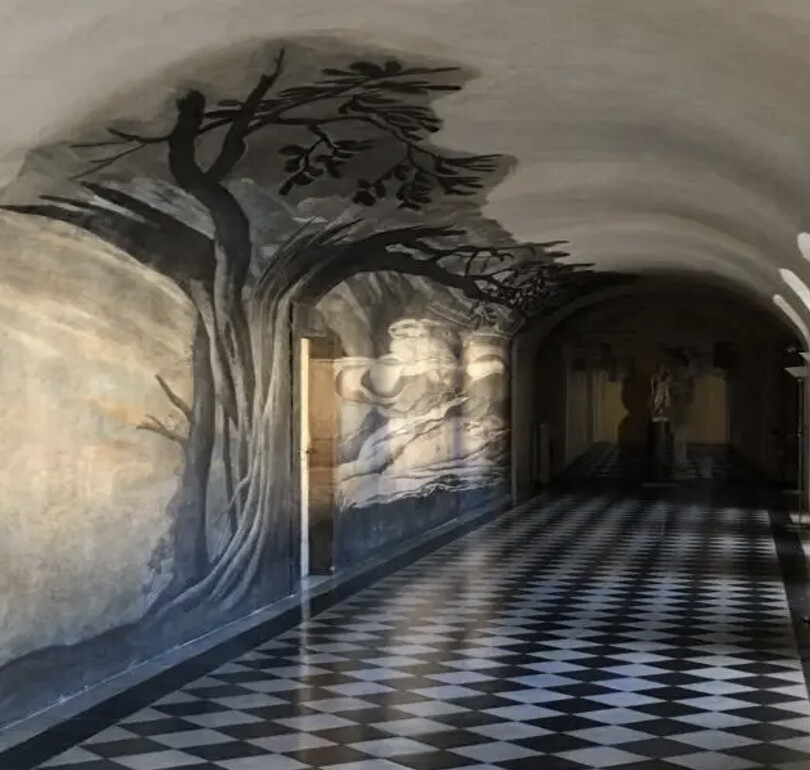
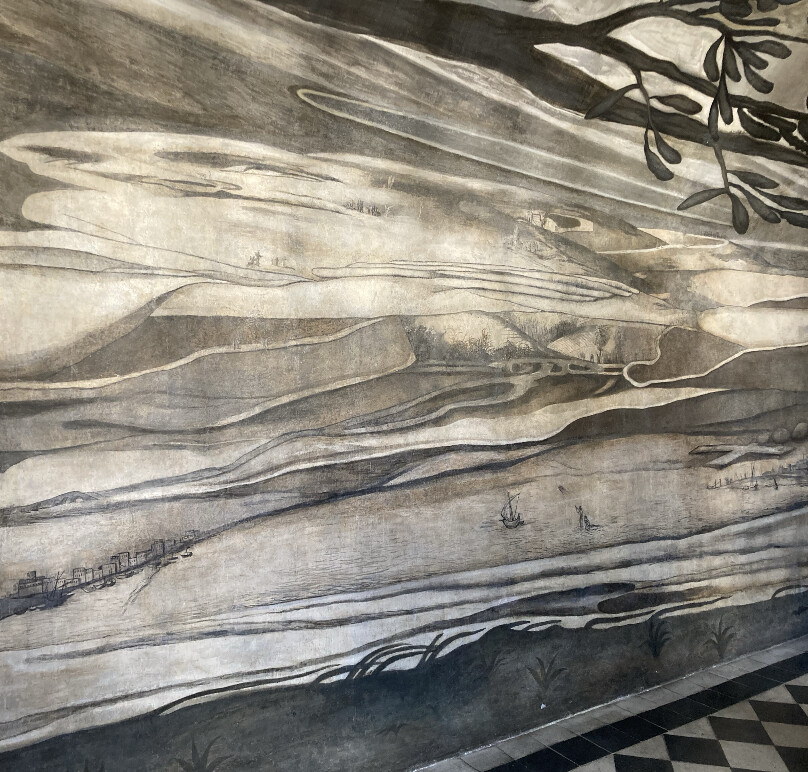
Emmanuel Maignan’s anamorphosis of San Francesco da Paola in prayer (c. 1642)
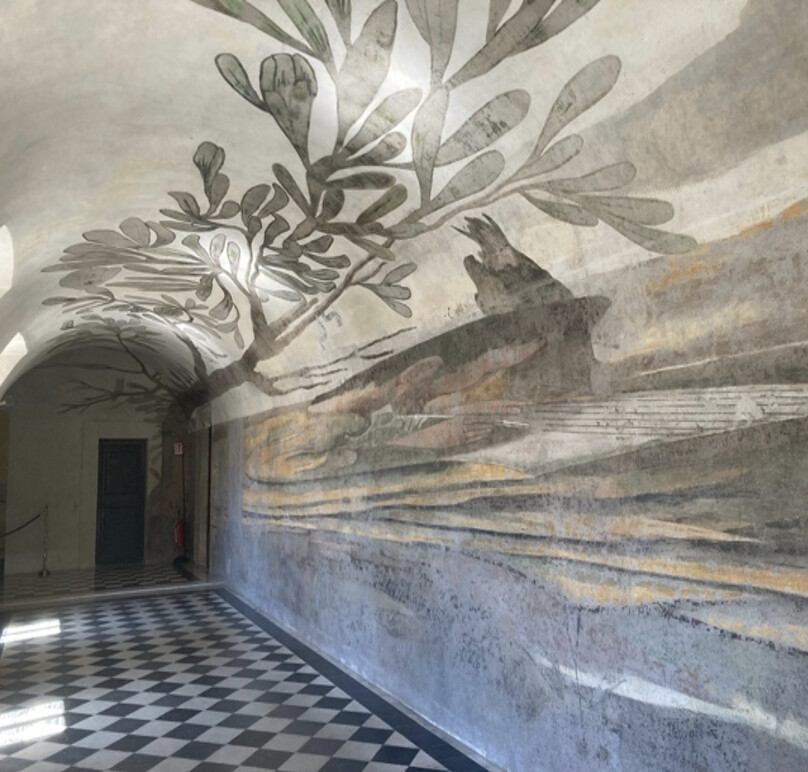
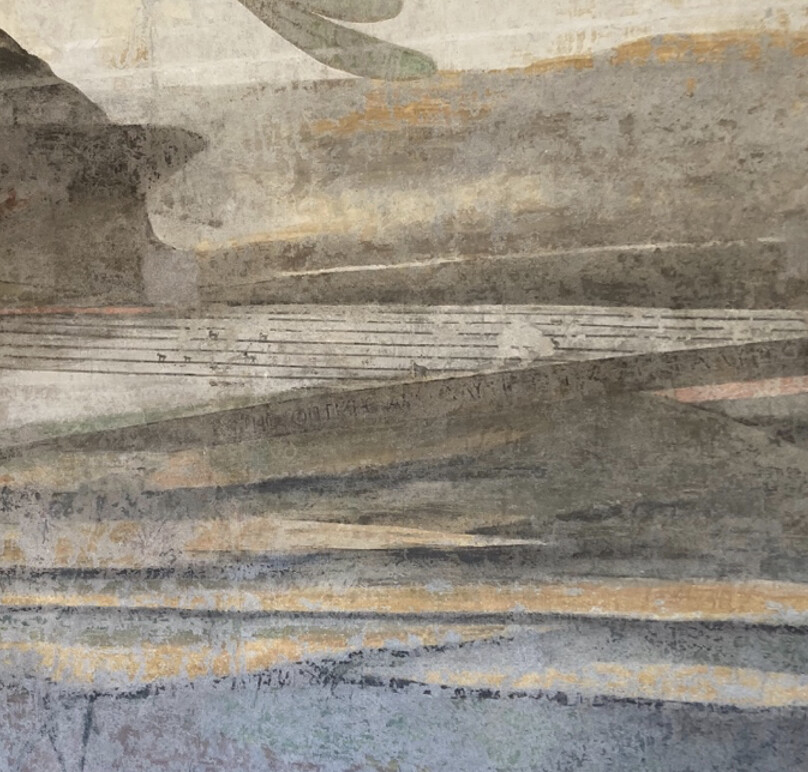
Jean François Niceron’s anamorphosis of
St. John the Evangelist writing his gospel on the island of Patmos (c. 1639-40)
While their exact meaning is less obvious—perhaps they were metaphors for divine creativity and the transformation from chaos into order, or the resolution of spiritual confusion through faith—one thing that is certain is that these works invited their viewers into spiritual contemplation across metaphysical domains. As these paintings were located in private corridors typically only used by the friars, we might imagine that the paintings became part of a ritual: the daily witnessing of a religiously charged optical marvel for the convent’s inhabitants.
Thus far we have identified three Minim scholars active in the sciences and producing scholarship united by its perceived spiritual service to the convent setting. However, there remains another important feature shaping their science, one that was somewhat specific to the Minims: their intellectual flexibility due to not having a defined philosophical dogma dictating their teaching program. This meant that, unlike other institutions and orders, such as the Jesuits, the Franciscans, or the Sorbonne, the Minims were not required to observe the kind of philosophical uniformity (which in this period largely entailed adherence to Aristotelianism) demanded of those other settings. So long as their philosophy did not challenge important doctrines of Catholic orthodoxy, the Minims were largely free to think and do as they pleased.
The implications of this freedom become clear with the example of experimental philosophy. Not only was this practiced by urban scholar-friars like Mersenne, Maignan, and Niceron, but it was also followed by ordinary Minim friars in rural convents. The most documented example of this can be found in the letters of Gabriel Thibaut, a Minim friar based in a rural convent in Auvergne who is only known to us today from a correspondence carried out with Mersenne between 1646-8. While Thibaut frequently complained about the constraints of intellectual life in the country, such as a lack of books or like-minded people to talk to, this did not entirely constrain his scholarly efforts. For one, his letters reveal that he was given ample freedom by his convent to conduct lengthy experiments. He also incorporated experimental philosophy into his duties as a teacher within the convent, referencing in his letters controlled, formulaic experimental trials (particularly in chemistry) that challenged or confirmed certain truths about natural phenomena. In fact, the language used in his letters reveal an astonishingly organized and communal characteristic belonging to Thibaut’s scientific activity, showing his developed sense of the experimental customs practiced far away in urban centers of scientific practice.
Not only do Thibaut’s letters demonstrate the profound reach of experimental philosophy and physico-mathematics in the 17th century, but they also reveal how the new science was incorporated into teaching practices in Minim convents. This is also exhibited in other Minim contexts. To return to the example of Emmanuel Maignan, experimental philosophy is the substance of his 1653 publication entitled the Cursus philosophicus. The Cursus, a school course in philosophy, was organized on the premise that ‘no one forbade us the use of the eyes, or touch, or other senses’ and thus ‘it may be sometimes permitted to prefer experimental notions to a simple judgement’. Maignan sought not only to synthesize metaphysics and physics, but he also wanted to challenge the kind of Aristotelian learning ubiquitous among scholastic institutions by proposing a place for ‘hands-on’ learning in the classroom. (Indeed, one experiment he suggests involves holding a guitar by the teeth to experience how sound can be felt in the nerves of the brain.) In doing so, his Cursus represents one of the earliest instances of an officially sanctioned experimental philosophy in a European classroom. Remarkably, this predates teaching materials found in continental universities by about 70 years (such as those found at the University of Leiden in the 1720s), and also likely the Jesuits by almost a century. While experimental practices had long been carried out informally in many guises, the recognition of the formal teaching of experimental philosophy by a humble, anti-erudition religious order—decades before it was adopted elsewhere—is a remarkable modification of our understanding of science history. And it is all the more astounding that their move toward experimental science was one that arose less out of philosophical commitment and more due to institutional indifference.
These are just some examples from one mendicant order, although the Minims did end up nurturing many other talented friars in the decades to come, including the naturalists Charles Plumier (1646-1704) and Louis Feuillée (1660-1732), and the Newtonian François Jacquier (1711-88). How far this framework of ‘cloistered science’ can be applied to other orders remains to be seen. Nevertheless, the Minim example suggests that such a framework might be found elsewhere. Furthermore, even if we can only reliably point to the Minims, their example shows the value of looking to this alternative intellectual culture flourishing in the age of the new science. Their work represents a particular moment in history: a time when religious orders were still recognized as trustworthy knowledge agents, but also a time when they enjoyed a greater social, cultural, and intellectual permeability compared to their medieval counterparts. What emerged from the cloister during that moment was a view of science not necessarily driven by a strict concern for a more accurate account of creation, but rather by a conceptualization of learning as an act of piety, turning the focus of philosophical practice toward the inner life of the scholar. Regarding their role in the new science, their contributions were not only novel but also embodied an alternative worldview that worked through the moral ambiguities emerging in science as it became subject to mechanization and objectivity—ambiguities that continue to plague us today in our new age of algorithms. In looking to the cloister, we may continue to complicate the teleological narratives of the Scientific Revolution and recognize how medieval institutions remain essential for how we understand modernity.
Emily Kent was awarded her Ph.D. in History from the University of Edinburgh in 2024. Her research centers on 17th- and 18th-century intellectual culture and scholarly practices, particularly in France. She has written for and co-edited the History of Universities special issue The Mind is its Own Place? Early Modern Intellectual History in an Institutional Context (Oxford, 2023) and the volume The Intellectual World of Marin Mersenne: Music, Science, and Religion in Dialogue (Brill, forthcoming 2026).

